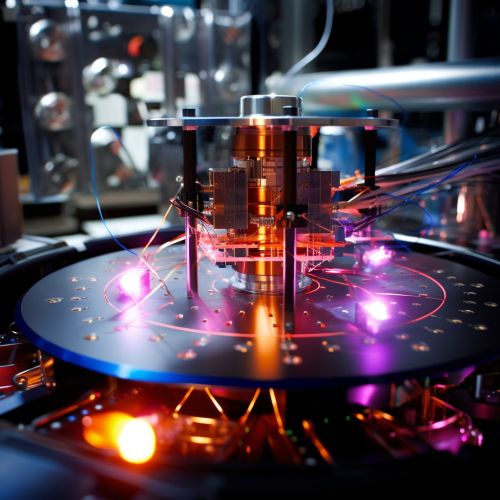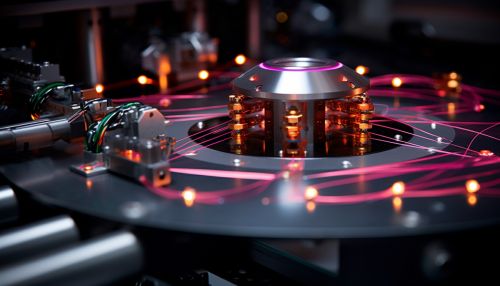Advances in Quantum Computing with Trapped Ions
Introduction
Quantum computing is a rapidly evolving field of study, with quantum mechanics at its core. It is a type of computation that utilizes quantum bits, or qubits, to perform operations. Trapped ion quantum computing is a promising approach in this field, where ions are trapped using electromagnetic fields and manipulated with lasers to perform quantum computation. This article delves into the advances in quantum computing with trapped ions, discussing the principles, advantages, challenges, and recent developments in the field.


Principles of Trapped Ion Quantum Computing
The fundamental principle of trapped ion quantum computing lies in the use of ions as qubits. These ions are trapped and isolated from their environment using electromagnetic fields, a state known as a Paul trap. The quantum state of each ion is manipulated using laser or microwave pulses, allowing for the encoding of information. The interaction between ions, mediated by their mutual Coulomb forces, allows for quantum gate operations. This interaction forms the basis for quantum entanglement, a key principle in quantum computing.
Advantages of Trapped Ion Quantum Computing
Trapped ion quantum computing has several advantages over other quantum computing architectures. One of the main advantages is the high-fidelity qubit operations, due to the isolation of ions from the environment. This isolation reduces the chances of quantum decoherence, a major challenge in quantum computing.
Another advantage is the long qubit coherence times, which allows for more complex computations. Additionally, trapped ions can be individually addressed with lasers, allowing for precise control over qubit operations.
Challenges in Trapped Ion Quantum Computing
Despite its advantages, trapped ion quantum computing also faces several challenges. One of the main challenges is scaling up the system. As the number of ions in a trap increases, the complexity of controlling individual ions also increases.
Another challenge is the requirement of high-precision lasers for ion manipulation. Any slight deviation in the laser parameters can lead to computational errors.
Lastly, trapped ion quantum computers require extremely low temperatures to operate, necessitating complex and expensive cooling systems.
Recent Developments in Trapped Ion Quantum Computing
In recent years, there have been significant advances in trapped ion quantum computing. Researchers have developed techniques to increase the number of ions in a trap, improve the precision of lasers, and enhance the cooling systems.
One of the most notable developments is the demonstration of a fully programmable and reconfigurable trapped ion quantum computer by Honeywell Quantum Solutions. This development marks a significant step towards the practical application of trapped ion quantum computing.
Conclusion
Trapped ion quantum computing is a promising approach in the field of quantum computing, offering high-fidelity qubit operations and long coherence times. Despite the challenges in scaling and precision, recent developments have shown significant progress in overcoming these hurdles. As research continues, trapped ion quantum computing is expected to play a crucial role in the realization of practical quantum computers.
